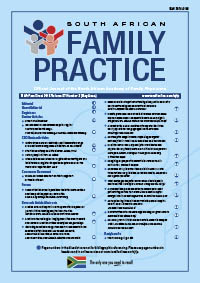Contraceptive usage in women requesting emergency contraception in Swaziland
Keywords:
contraception, birth control, prevention of pregnancy, sexually transmitted diseases
Abstract
Background: The Kingdom of Swaziland, following the introduction of the National Family Planning Programme in 1973, has witnessed insufficient scientific publications on the contraceptive practices in the country despite documented high fertility rates and low contraceptive prevalence rates. This study was conducted to understand the practices and potential determinants of contraception among Swazi women who requested emergency contraception. Methods: The data were collected over a period of one month and analysed using simple descriptive analysis to summarise the data and bivariate analysis to determine relevant factors associated with the use of contraception. Results: The majority of participants (79%) use contraceptives. Reasons given for not using contraception previously ranged from medical conditions to not being sexually active. Widely used contraceptives are male condoms, injectable hormones and combined oral contraceptives while the least popular are implants, and post-coital pills. Knowledge of contraceptives came mainly from the health facilities, peers and mass media while parents are the least consulted sources. A high percentage (97%) are aware of sexually transmitted diseases (STDs) and that male and female condoms are the best forms of protection against STDs. Demographic and socio-economic variables are not significantly related to the use of contraceptives. Conclusion: The study established that the majority of the participants used some form of contraception and they also delayed their sexual debut up to the age of 18–20 years. The observed changes of increased contraceptive use and later age of sexual debut could be associated with increased levels of education of the participants and the predominant relaxed approach by Protestants and Zionists who are usually tolerant of contraception. The recommendations, based on the findings of this study, would assist with the planning and implementation of future family planning programmes for which this study serves as a foundation. (Full text available online at www.medpharm.tandfonline.com/ojfp) S Afr Fam Pract 2015; DOI: 10.1080/20786190.2014.976991
Published
2015-07-12
Section
Research Articles
By submitting manuscripts to SAFP, authors of original articles are assigning copyright to the South African Academy of Family Physicians. Copyright of review articles are assigned to the Publisher, Medpharm Publications (Pty) Ltd, unless otherwise specified. Authors may use their own work after publication without written permission, provided they acknowledge the original source. Individuals and academic institutions may freely copy and distribute articles published in SAFP for educational and research purposes without obtaining permission.

